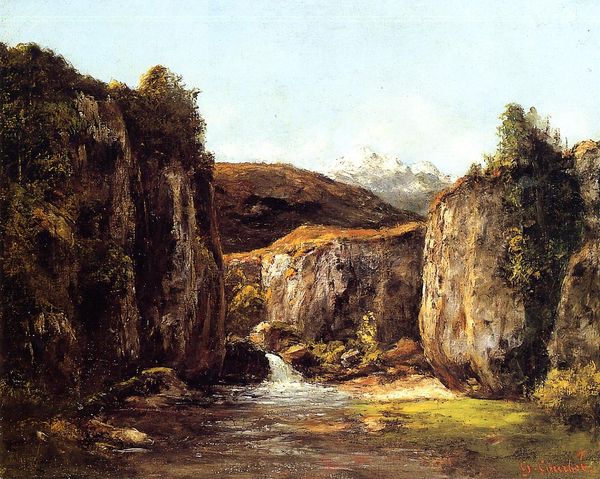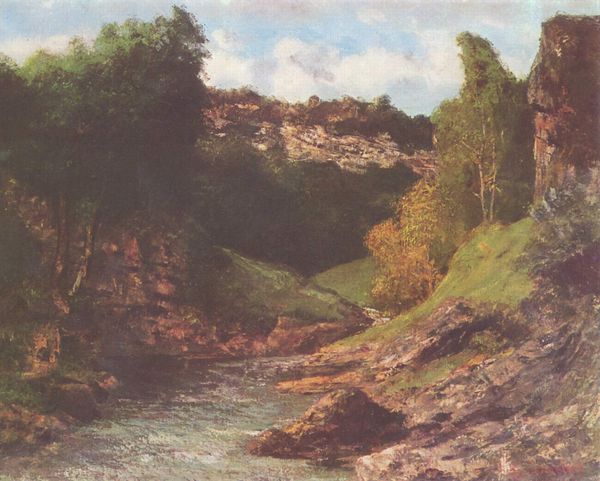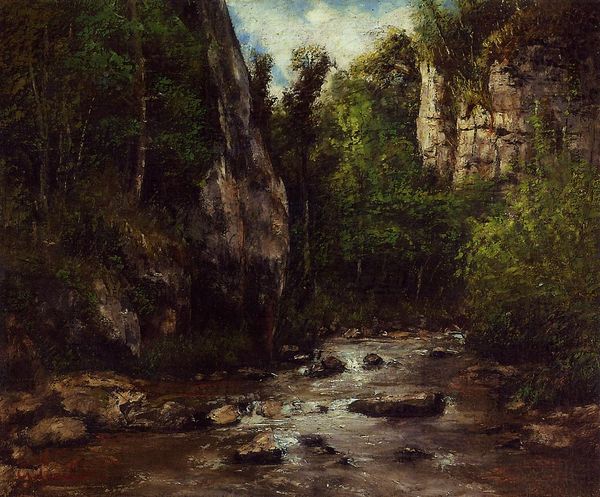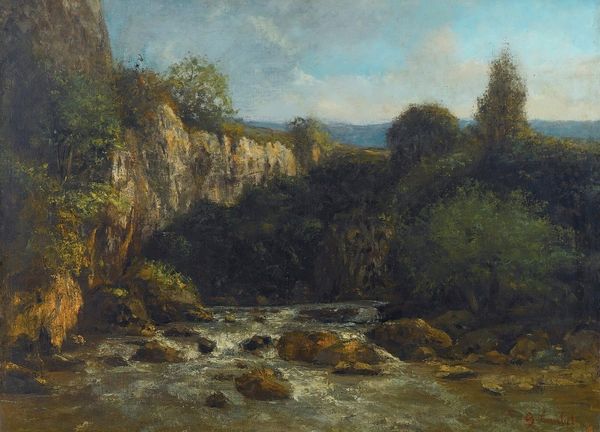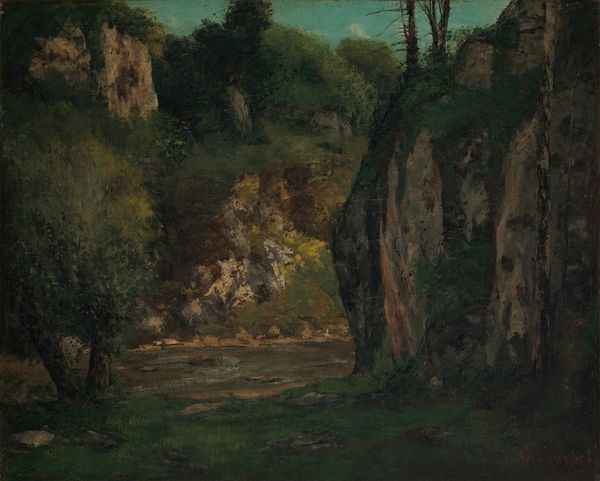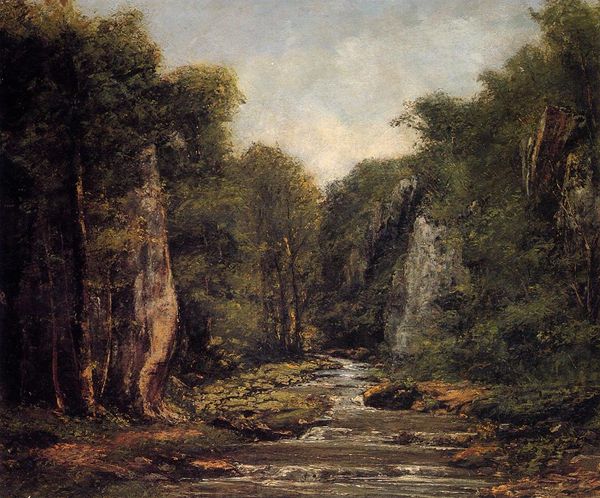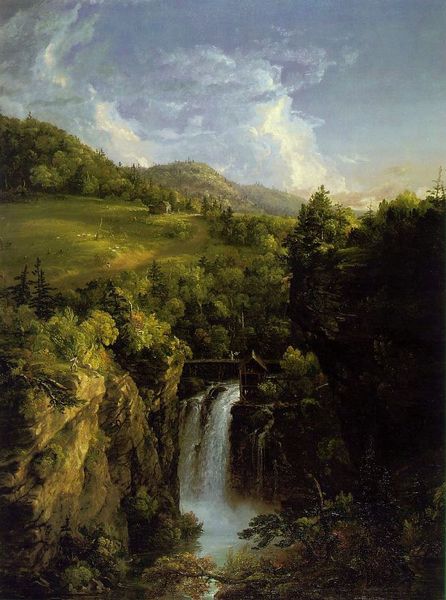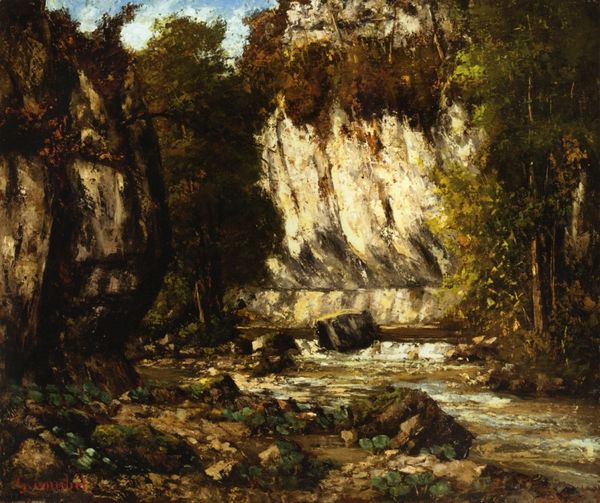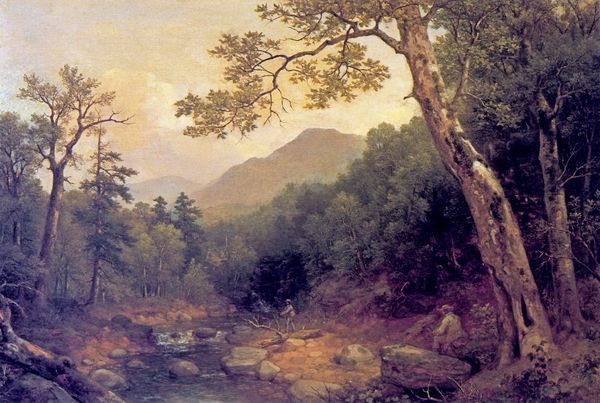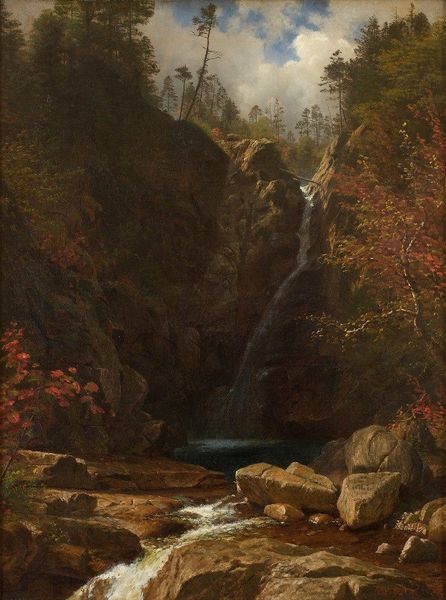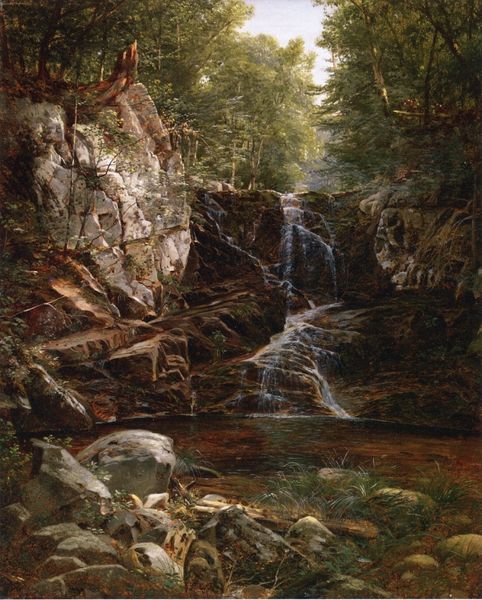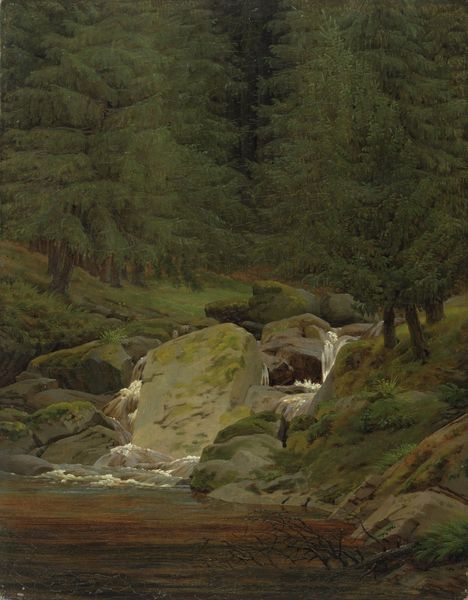
Copyright: Public domain
Curator: Let's take a look at Gustave Courbet's "Stream in the Jura Mountains," painted in 1873 using oil on canvas. Editor: It’s immediately striking – the raw texture and deep greens evoke such a powerful sense of place, almost like I can hear the rushing water and feel the damp air. Curator: Courbet had a deep connection to the Jura Mountains. We need to understand this in terms of his biography and his politics. Following the Franco-Prussian War and his involvement with the Paris Commune, Courbet was imprisoned and then exiled to Switzerland. This landscape, then, speaks to displacement and perhaps even resistance through its sheer embodiment of place. Editor: I agree; it feels defiant. Courbet’s choice to paint en plein air, capturing the landscape directly, also disrupts traditional academic painting, making nature the subject of observation rather than idealized historical scenes. He centers lived experience and disrupts power through artistic agency. Curator: It's more complicated than a straightforward "love of nature" narrative, isn't it? The reception of landscape paintings throughout the 19th century and beyond is closely tied to burgeoning nationalism. Can we then ask: whose land is this, really? Who gets to claim it? How is the "natural" used to legitimize certain ideologies? Editor: Absolutely. This focus moves landscape painting beyond pretty scenes, connecting it to critical inquiries about land rights, national identity, and environmentalism. It forces us to acknowledge that even something that seems simple on the surface might reveal deep structural issues. Curator: Considering Courbet's social and political leanings, the imagery can even be considered a subversive act, and that’s fascinating to contemplate in relation to contemporary discourse around ownership and control of nature. Editor: Indeed. "Stream in the Jura Mountains" serves not only as a reflection of natural beauty, but as a profound commentary on political exile, environmental politics, and the very act of representation itself.
Comments
No comments
Be the first to comment and join the conversation on the ultimate creative platform.
